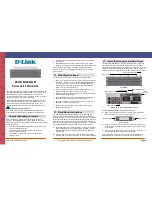
Appendix D - AT Command Summary
RF300E/RF310E
151
communications equipment. All EPA information stored in the decode buffer contains
a timestamp. The timestamp has the form [DD, HH:MM:SS:mmm] where DD is the
day, HH is the hour, MM is the minute, SS is the second, and mmm is the millisecond
at which the information was recorded. This time is the time since the TA was
powered on or reset. For example, when the TA is powered on, the first immediate
timestamp would be [00, 00:00:00:000]. Three minutes after power-on the timestamp
would be [00, 00:03:00:000]. Timestamping is useful for aiding in cross-referencing
the order of events between the logging buffer and decode buffer. It is also useful for
determining the amount of time between events in question. Refer to S-register S102
for details on what types of information can be stored or ignored—useful for focusing
on a certain type of information.
Command: *FSn
Function:
Reset TA
Unit:
Decimal ASCII code
Values:
n=0—reset and delay in boot code
n=1-255—reset immediately
Default:
*FS0 (reset and delay in boot code)
Description:
*FSn may be used to perform a quick reset of the TA without powering it off and on.
For any value of n other than 0, the TA will reset immediately (most commonly *FS1
is used).
Command: *Ln
Function:
Fatal Error Information
Unit:
Decimal ASCII code
Values:
n=blank—display fatal error information
n=1—perform a fatal error
n=2—reset fatal error information
Default:
*L (display fatal error information)
Description:
*L displays the most recent fatal errors. *Ln may be used to perform a pseudo fatal
error or reset the fatal error information.
Command: >LOG
Function:
Display Logging Buffer Contents
Unit:
n/a
Values:
n/a
Default:
n/a
Description:
>LOG displays the logging buffer contents. Without the source code, some
information is still useful to the user. However, when debugging problems the source
code relevant to the build (version/model) of the firmware is necessary. All log_msg()
information stored in the logging buffer contains a timestamp. The timestamp has the
form [DD, HH:MM:SS:mmm] where DD is the day, HH is the hour, MM is the minute,
SS is the second, and mmm is the millisecond at which the information was
recorded. This time is the time since the TA was powered on or reset. For example,
when the TA is powered on, the first immediate timestamp would be [00,
00:00:00:000]. Three minutes after power-on the timestamp would be [00,
00:03:00:000]. Timestamping is useful for aiding in cross-referencing the order of
events between the logging buffer and decode buffer. It is also useful for determining
the amount of time between events in question.
Command:
>Sn=x, >S?
Function:
Logging Buffer Commands and Variables
Unit:
Decimal ASCII code
Values:
LOGGING COMMANDS
n=98,x=0—Stop logging to buffer
n=99,x=0—Clear logging buffer
n=255,x=0—Disable all logging variables
n=255,x=1—Enable all logging variables
Summary of Contents for RASFinder RF300E
Page 5: ...Remote Access Device Chapter 1 Introduction and Description ...
Page 11: ...Remote Access Device Chapter 2 Installation ...
Page 14: ...RASFinder RF300E RF310E User Guide RF300E RF310E 14 ...
Page 15: ...Remote Access Device Chapter 3 Software Loading and Configuration ...
Page 35: ...Remote Access Device Chapter 4 RASFinder Software ...
Page 72: ...RASFinder RF300E RF310E User Guide RF300E RF310E 72 ...
Page 73: ...Remote Access Device Chapter 5 Client Setup ...
Page 90: ...RASFinder RF300E RF310E User Guide RF300E RF310E 90 ...
Page 91: ...Remote Access Device Chapter 6 RAS Dial Out Redirector ...
Page 99: ...Remote Access Device Chapter 7 Remote Configuration and Management ...
Page 108: ...RASFinder RF300E RF310E User Guide RF300E RF310E 108 ...
Page 109: ...Remote Access Device Chapter 8 Service Warranty and Tech Support ...
Page 113: ...Remote Access Device Appendixes ...
















































